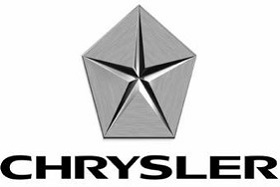 The United States government’s bailout of the American auto industry after the economic crisis of 2008 will forever be controversial.
The United States government’s bailout of the American auto industry after the economic crisis of 2008 will forever be controversial.
As part of the government’s Troubled Asset Relief Program (TARP), the U.S. bailed out a flailing GM to the tune of $49.5 billion and brought Chrysler back from bankruptcy for $7.53 billion in the name of saving the companies and the hundreds of thousands of jobs that might have been lost in the wake of the industry’s collapse.
Money from TARP going to help prop-up the "too big to fail" banks and investment firms whose practices led to the market crash made it an unpopular program to begin with; the government bailouts of American automakers that followed were seen as throwing good money after bad, helping lost-cause companies that the market had deemed unfit. Today, while the government is selling more of its stock in GM, Chrysler seems poised to file for a long-rumored initial public offering (IPO).
When Chrysler was pulled from the grave in 2009, leading shareholder status was split between Fiat and the United Auto Workers (UAW) retiree health-care trust. Over time, Fiat’s shareholdings have increased while Chrysler has worked its way back up to the point where its debts to the U.S. and Canadian governments are now considered repaid — even though taxpayers still lost $1.3 billion.
Fiat now wants full control of Chrysler, and while the UAW trust acknowledges that it wants out of its stake in the company, the two sides haven’t been able to come to a deal. The UAW trust believes that an IPO will set a fair market value that Fiat and Chrysler CEO Sergio Marchionne will have to match if he wants to buy out the the trust’s minority stake in Chrysler. Paperwork could be filed as soon as this week, and the IPO could happen as soon as November, though Marchionne has stated his preference to wait until after the holiday season for the offering.
The Chrysler IPO news comes on the heels of new Treasury Department reports noting that in August alone the government sold $811 million in GM stock, leaving a current loss of more than $14 billion as the government sells off its holdings in General Motors. While the bad news is that General Motors stock would have to nearly double from its current value range for taxpayers to break even, the good news is that if GM’s stock remains at its current value (and it’s expected to), the final government loss on GM will be $7.6 billion.
With initial estimates placing the U.S. taxpayer’s loss on GM at around $44 billion, $7.6 billion almost seems like a windfall — almost. While we all wait to see how history will judge the auto bailouts, the multibillion-dollar losses in government investments continue to pile up — making it very difficult to find the silver linings in the situation.
[Sources: The Detroit News; The Detroit Bureau; MSN Autos (1),(2),(3),(4)]
Source: MSN
No comments:
Post a Comment